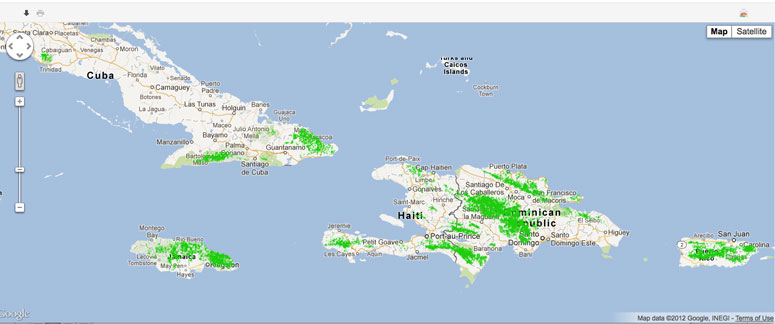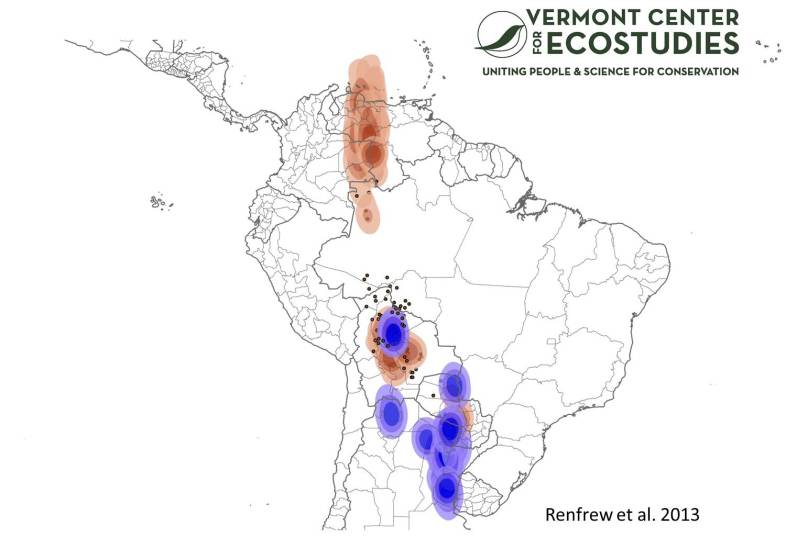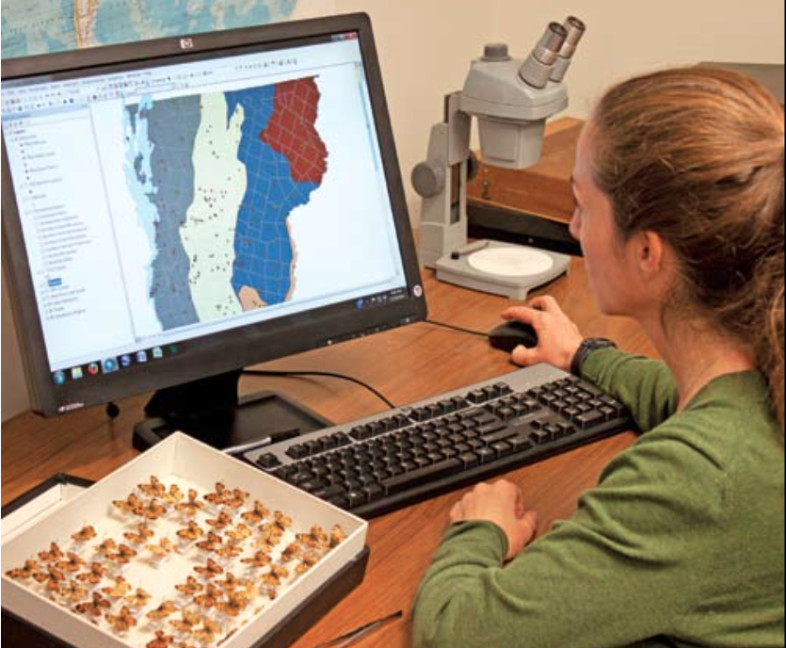From birds to butterflies, vernal pools to zebra mussels, VCE biologists harness the power of technology to help solve conservation issues. A 2016 TechGrant award from the TechFoundation will now enable us to do even more.
“VCE’s wildlife conservation work relies increasingly on sophisticated technology, spanning field research, data analytics, and communications,” says Executive Director Chris Rimmer.
VCE will use its TechFoundation award to enhance our technological hardware, via an integrated back-up system for our extensive and irreplaceable data, a Geographical Information System (GIS) workstation, and high resolution digital cameras for use in the field. VCE will also apply the TechGrant funds towards the salary of a full-time IT specialist, who will serve as a programmer, web developer, and general IT specialist for the institution. “This type of targeted technological enhancement is precisely what the TechGrants program is intended for,” said TechFoundation Executive Director David Altshuler. “We are excited to be able to support VCE in its use of new technologies to further conservation science.”
Technological advances over the last few decades have provided conservation biologists with tools and techniques that are essential to the way we practice and communicate conservation science today. Through the innovative use of these new tools, which include systems and statistical procedures, entire new lines of investigation have opened.
“All of this work requires sophisticated, up-to-date technology,” says Rimmer. “We are delighted to be the recipient of this important technology grant award from TechFoundation. We simply couldn’t achieve the caliber of conservation science we aspire to without such support.”
The TechFoundation is a Cambridge-based, nonprofit organization that delivers technology, expertise, and capital to help nonprofit organizations serve humanity. TechFoundation envisions a world where nonprofit organizations can access the same resources to serve humanity that businesses use to create wealth.
Since its founding nearly a decade ago, VCE has used powerful GIS, modeling software and hardware to help solve complex conservation science issues. For example, we were able to model where valuable Bicknell’s Thrush winter habitat might be located in the Caribbean, enabling more focused efforts to conserve this high-priority migratory songbird across its winter range. Closer to home, we used color-infrared aerial photography and GIS to map thousands of potential vernal pools across Vermont, a critical first step towards protection of these vulnerable amphibian breeding sites.

Maxent logistic estimates of probability of presence of Bicknell’s Thrush in the Greater Antilles. Response variables included elevation, slope aspect, land cover type, total winter precipitation, and winter mean minimum temperature. Potential winter habitat for Bicknell’s Thrush depicted in green ~1×1 km cells using the 10 percentile training presence logistic threshold (≥ 0.25) from the best-fitting Maxent model. Click on image to view in Google Maps and download a Google Earth (kmz) file.
Recently, VCE biologists attached miniature light-level geolocators to migratory birds in an effort to learn their pathways and destinations as they travel back and forth between breeding and wintering grounds. These geolocators, as small as your fingernail, record the precise time and light levels every few minutes. Using this information, combined with powerful statistical tools and computers, biologists can determine where the bird was each day on its travels across the hemisphere. VCE has made some remarkable discoveries: Bicknell’s Thrushes migrating through the Bahamas en route to the Dominican Republic from their mountaintop breeding sites in northeastern North America; Blackpoll Warblers undertaking spectacular nonstop flights across the Atlantic for over 70 hours; and Bobolinks flying from northern breeding areas to southern South America, stopping in Venezuelan grasslands on the way. These findings allow biologists to concentrate conservation action in places where these birds need it most.

Bobolinks breeding in Oregon, Nebraska, and Vermont all converge into 3-6 week stops (brown) and 3-4 month wintering areas (blue) in South America.
“From Canada to South America, there is a tremendous amount of science and conservation that needs to be done.” said Rimmer. “This technology will not only help VCE accomplish that work, but it will enable us to communicate the information to those who can implement direct, on-the-ground conservation actions.” You can follow all VCE’s progress and even join our efforts as a citizen scientists by visiting the VCE web site.


Congratulation!! So proud of VCE!
Chris, Congrats to the whole team at VCE!
Very exciting! Congratulations, guys and gals!